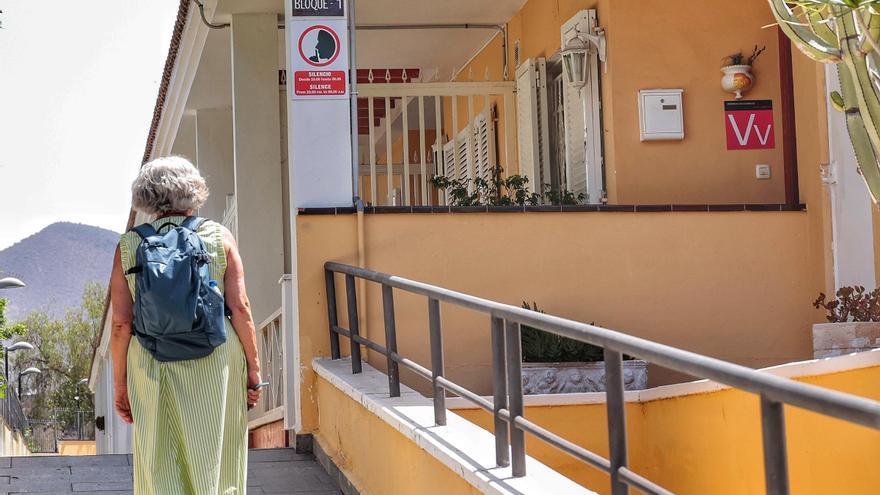Holiday home prices reach unprecedented heights across the Canary Islands
The square meter cost of holiday homes on the coast of the Canary Islands is soaring, and there are already many islands where the market cost of a property of this type is double that of a residential home. This dramatic shift is reflected in the Housing on the Coast 2025 Report by Tinsa by Accumin, which concludes that the archipelago is facing high pressure on housing prices due to tourist and foreign demand, making it increasingly difficult for local residents to access permanent housing.
The price gap: residential vs. holiday properties
On average, the price per square meter of a residential house located on the coast of the Islands reaches €1,812.5, a figure that rises dramatically to €2,915 when it comes to the market price of a house or flat for tourism. This represents a staggering percentage variation of 61%.
To put this into perspective for potential investors and travelers, a residential house of 100 square meters in a building on the coast of Mogán (Gran Canaria) can reach €221,000 (€2,212 per square meter). But the scenario changes dramatically if the property, in the same building and in the same municipality, is a holiday home—the price reaches €450,000 in that case. This pattern repeats across many municipalities throughout the archipelago.
The reason behind this price disparity lies in expected profit potential. This type of housing is strategically located in prime tourist areas—on beaches, in the mountains, in historic centers—where demand is exceptionally high. These properties offer substantial profitability to owners through tourist rentals, which significantly increases their investment value for those looking to enter the vacation rental market.
Island-by-island price breakdown for investors
For travelers and investors considering different islands, the price variations are particularly noteworthy. In Lanzarote, the holiday square meter commands around €4,250, compared to the general average value of €1,855 for residential properties on this volcanic island paradise. Gran Canaria shows a significant jump from €1,577 to €2,892 per square meter when comparing residential to tourist properties.
La Gomera, despite being one of the smaller and more tranquil islands, still shows a substantial difference of almost a thousand euros, rising from €1,375 per square meter to €2,350 per square meter for tourist properties. This presents interesting opportunities for investors seeking less saturated markets with authentic island experiences.
The trend continues across all islands in the archipelago. In Tenerife, the largest and most developed island for tourism, the average price of holiday homes on the coast reaches €2,800, while non-tourist properties reach €1,890. La Palma offers slightly more accessible pricing, with residential properties costing €1,358, while holiday homes reach €2,100—still attractive for those seeking the “Beautiful Island’s” unique volcanic landscapes and hiking opportunities.
Fuerteventura, renowned for its pristine beaches and wind sports, is not far behind in the pricing trend: the average residential price is €2,002 per square meter, while tourist properties reach €3,100—reflecting the island’s popularity among beach lovers and water sports enthusiasts.
Market dynamics and regional trends
The report, which reflects current trends in prices, supply, and demand in the main coastal areas of Spain, points out that the average price of housing in the Islands—both Balearic and Canary Islands—in the first quarter of 2025 was €2,481 per square meter, the highest among all coastal areas. Additionally, the Islands recorded the highest year-on-year price growth at 12.8%, well above the national average.
In the province of Las Palmas, coastal areas excluding the capital accounted for 72% of sales and 55% of building permits, reflecting the specific weight that the capital still retains, especially in terms of new housing development. The province of Santa Cruz de Tenerife shows even more emphatic figures: areas outside the capital account for 87% of sales and 73% of building permits, demonstrating the intense real estate activity in tourist-focused coastal regions.
Foreign investment patterns and market activity
Foreign home sales and purchases in coastal areas grew across the board in 2024, with an increase of 2.5% on the coast and 4.5% in Spain as a whole. The boost came mainly from resident foreign buyers, although non-resident transactions also increased significantly. By area, there was a strong upturn on the North Coast, where transactions soared by 20.1% year-on-year.
Interestingly, the islands recorded a decline of 5.5% in foreign transactions. Even so, they continue to account for the largest share of foreign sales and purchases, although this share fell from 39% in 2022 to 34% in 2024. In the rest of the coastal areas, activity remains at levels close to historic highs, indicating sustained interest from international buyers and investors.
Market concerns and future outlook
Although the report does not expressly speak of a real estate bubble, the growing gap between the value of holiday homes and residential properties, coupled with the strong dependence on the foreign and tourist market, fuels the debate about a possible overvaluation of the market in the coastal areas of the archipelago. In many municipalities, prices don’t seem to respond so much to the value of use as to the expectation of profitability, which introduces a speculative component into the equation.
For the moment, price rises continue to be driven by real demand—albeit heavily skewed towards investor and non-resident profiles—rather than by uncontrolled credit expansion, as was the case in past market cycles. However, the signs of tension are increasingly visible: growing inequality in access to housing, concentration of supply in tourist uses, and a price escalation that far exceeds local purchasing power.
As real estate history teaches us, when prices become too disconnected from the social and economic reality of the territory, the risk of adjustment is always on the table. For travelers and investors alike, understanding these market dynamics is crucial for making informed decisions about property investment in one of Europe’s most sought-after island destinations.

